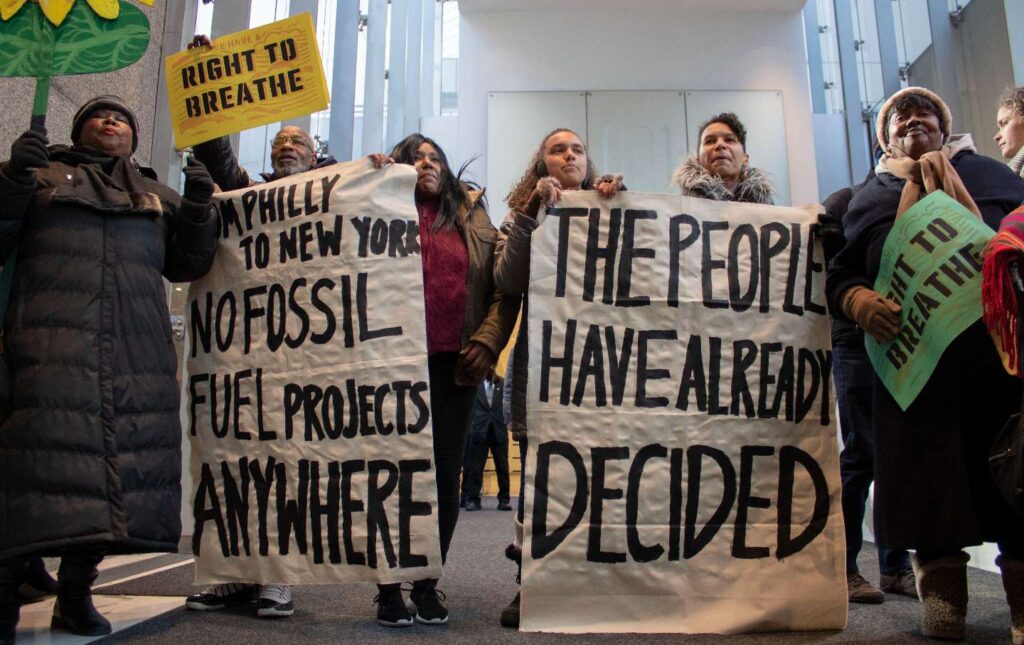September 20, 2024
Will the Closure of an Oil Refinery Bring Justice or Gentrification to Philadelphia?
By Evan Robins
Four years after the largest oil refinery on the East Coast shut down, residents in South and Southwest Philadelphia still don’t know what will come next.

(Philly Thrive)
Growing up in the Grays Ferry neighborhood of South Philadelphia, Shawmar Pitts never thought twice about the oil refinery looming in the background, spewing toxic fumes in plain sight. It wasn’t until years later that he finally made the connection between the refinery and exposure to chemicals that put his community at high risk for life-threatening diseases.
“Every single house, somebody has asthma, somebody has cancer, somebody has those heart diseases and lung diseases that’s caused by these contaminants from the oil refinery,” Pitts said. “All this time, we were wondering why people are getting sick, and the oil refinery is the culprit.”
The Philadelphia Energy Solutions refinery complex, founded in the 1860s, was once the largest oil refinery on the East Coast, emitting carcinogenic chemicals into South and Southwest Philadelphia for over a century before multiple explosions in 2019 finally brought it to a permanent close. The effects of the refinery’s sulfur dioxide, nitrogen oxide, and particulate matter emissions have left a lasting impact on the health of those living in the majority-Black, working-class neighborhoods directly adjacent to it. This is in keeping with the findings of a 2017 report from the NAACP and Clean Air Task Force that found that Black people are 75 percent more likely to live next to polluting sites, such as oil refineries, than white people.


